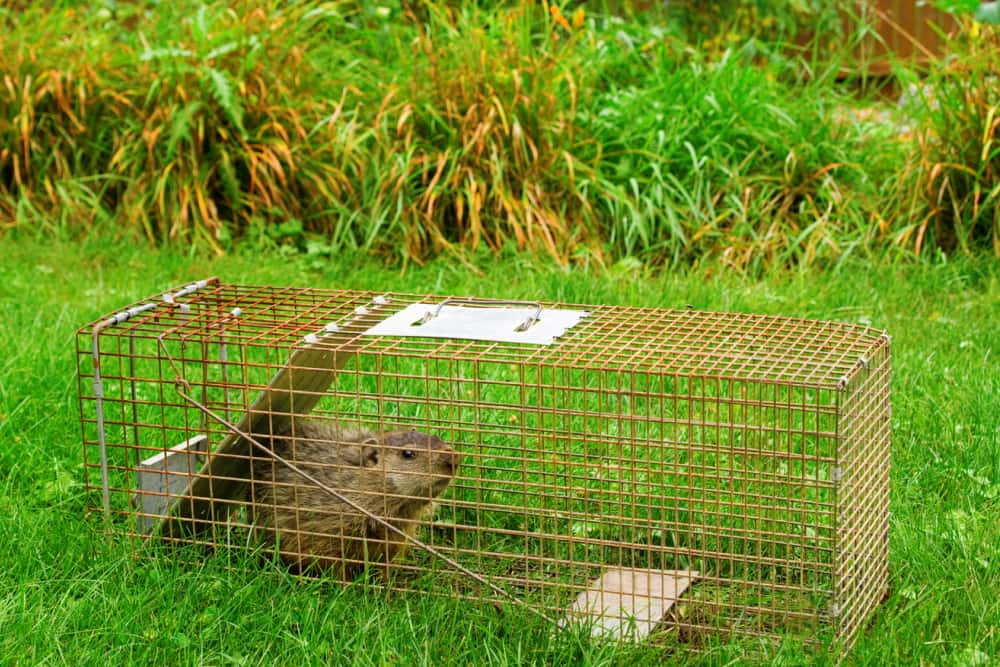6 Effective Ways to Get Rid of Groundhogs
Groundhogs are part of the squirrel family. Although they are larger than most squirrels, they share common traits. They are herbivores and enjoy eating grass, fruit, vegetables, and tree bark. They create burrows with multiple entrances, reaching up to five feet underground. They can be found in urban and rural areas. In the city, groundhogs are notorious for digging up lawns, home gardens, flower and vegetable fields, and yards and destroying them in search of food.
Damage caused by groundhogs
Groundhogs may seem like harmless creatures that only dig in the ground and soil and cause visible damage to lawns, fruits and vegetable beds, and grass.

List of ways to get rid of groundhogs
If one notices a sudden rise in humidity and moisture in the floors or basements, it could indicate the presence of groundhogs. Removing them becomes the only option to protect the house and garden. However, chemical toxins and pesticides are often illegal in many states and can be ineffective. In some states, groundhogs are treated as game animals and may need permits to be removed. So, the best way to get rid of groundhogs is by using natural methods.
Create vibrations to instill fear
Groundhogs are known to be cautious of unfamiliar things and sounds in their surroundings . They may become frightened upon encountering new stimuli. Fortunately, there are various ways to deter them from approaching the garden or building. For instance, ultrasonic devices that emit high-pitched sounds can create vibrations that scare groundhogs away. Additionally, one can use motion-sensor repellers available in the market to shoo them away effectively.
Create audio-visual distractions
Here are some of the effective methods of confusing groundhogs through audio and visual distractions:
- Placing colorful balloons around the garden and at the entrance of the burrow
- Placing bright pinwheels around the garden and the burrow entrance
- Attaching light balls loosely to long ropes to keep them bouncing when the wind blows
- Tying discarded CDs or shiny objects in a string and hanging them like banners
- Using multiple wind chimes around the property to create continuous noise
- Tying bells around the garden
- Tying pieces of thin or scrap metal that create a sound when grazing against one another
Sprinkle spicy scents
Groundhogs dislike spicy and aromatic scents. To keep them away, one can sprinkle garlic, pepper, or talcum powder around the perimeter of your house and garden.
Apart from these groundhog removal options, one can look at the following to get better results.
Use natural groundhog repellents
Besides food scraps and animal waste, many other natural repellents help remove groundhogs. They include;
- Epsom salts
Groundhogs do not like Epsom salts. Sprinkle them on plants frequently, as the salts can get washed away during irrigation or exposure to natural elements. - Ammonia solution
Mix two cups of regular ammonia in water. Combine two tablespoons of detergent in about 60 ml of water in another cup. Stir the mixture and pour it into the tunnels so that they can flow through them as far as possible. Repeat this process a few times until one finds no signs of groundhogs. - Mothballs
Crush moth balls in a powder form and sprinkle them at the entrance of their tunnels. The pungent smell can drive the groundhogs away.
Set baits and traps
Baiting is one of the safest and most effective natural groundhog removal methods. Use fresh fruit and vegetables to lure them into a one-way trap that shuts automatically when the groundhog enters it. Take them away and release them into the outdoors. Some of the best baits for groundhogs include:
- Carrot
- Watermelon
- tomatoes
- vines
- apples
The ideal place for a trap is right outside their burrow hole so that they walk into it . Once trapped, a groundhog can become aggressive, so exercise caution to release them safely into the wilderness. Try this a few times till all the groundhogs on the property are removed and replaced safely.
Build a durable fence
Build a three-foot-high fence using posts and wobbly wire mesh to prevent groundhogs from climbing over it. However, if the issue is persistent, it may try to build a tunnel underneath the fence. So, it is essential to make a fence that goes at least 12 inches below the ground and fill it with dirt or soil to prevent the groundhogs from digging through it.

